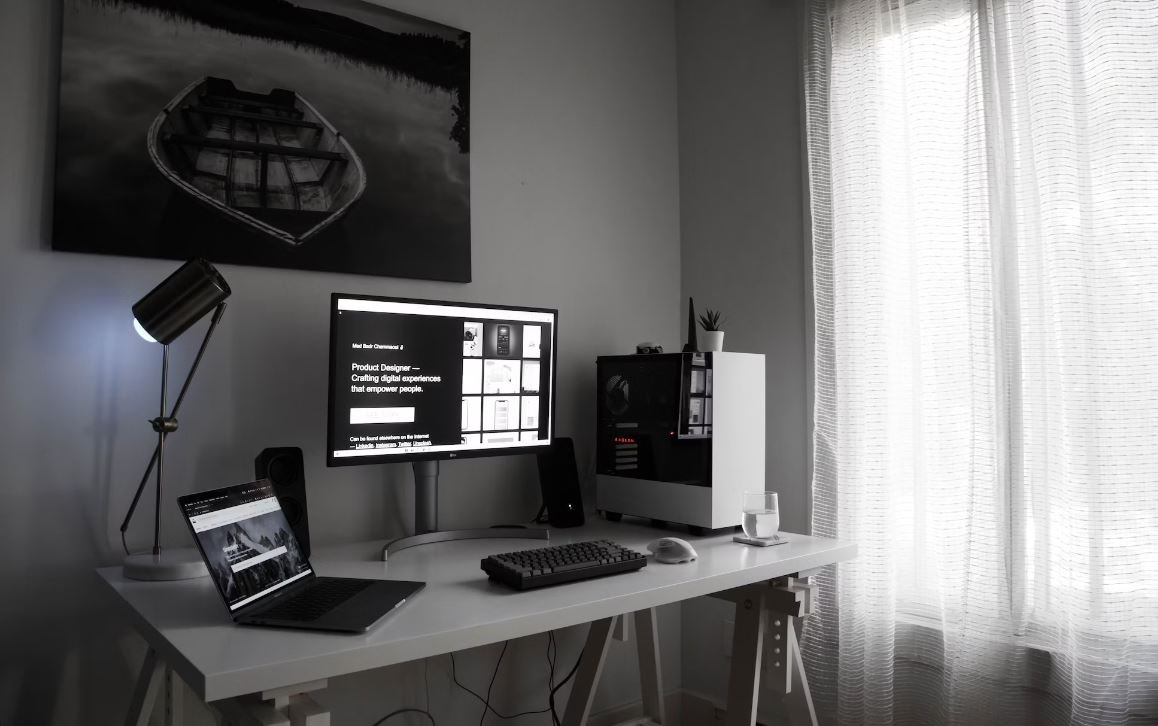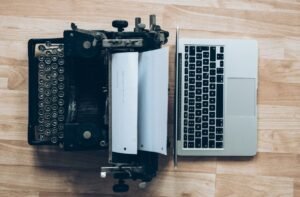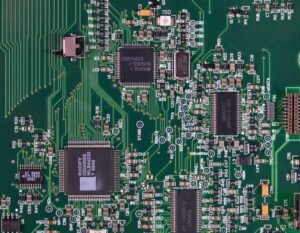Generative Art NFT
Generative art Non-Fungible Tokens (NFTs) have been gaining popularity in the digital art world in recent years. NFTs are unique digital assets that provide proof of ownership and authenticate the origin of a piece of digital art. Generative art refers to artwork that is created by algorithms and computational processes, resulting in unique and ever-changing pieces. When combined, generative art and NFTs offer a new and exciting way for artists to showcase their creativity and collectors to own exclusive digital artwork.
Key Takeaways
- Generative art NFTs are unique digital assets that combine generative art and blockchain technology.
- They provide proof of ownership and authenticity for digital artwork.
- Generative art involves algorithms and computational processes that continuously create unique and evolving pieces.
- NFTs allow artists to monetize their creations and offer collectors exclusive ownership.
- The market for generative art NFTs is rapidly growing, with high-value sales and increased interest from collectors.
Why Generative Art NFTs are Valuable
Generative art NFTs hold value due to their uniqueness, traceability, and scarcity. Each generative art NFT is one-of-a-kind and cannot be duplicated, making it exclusive to the owner. The blockchain technology used in NFTs ensures that the ownership and transaction history of each artwork can be easily verified and traced, enhancing its value. Additionally, many generative art projects limit the number of editions or variations available, creating a sense of scarcity and increasing the desirability for collectors.
Generative art NFTs provide a bridge between traditional art and the digital realm, bringing together creativity and technology.
The Process of Creating Generative Art NFTs
Creating generative art NFTs involves using algorithms and computational processes to generate unique artwork. Artists can define certain parameters or rules within the algorithm, allowing for endless possibilities and variations in the artwork. These algorithms can produce visuals, animations, or even audio compositions. Once the generative art is created, it is minted as an NFT and stored on a blockchain, usually Ethereum.
The limitless variations and possibilities in generative art NFTs make each piece truly unique and special.
| Generative Art NFT Platforms | Features |
|---|---|
| OpenSea | Marketplace for buying and selling generative art NFTs. |
| CryptoPunks | Popular collection of 10,000 unique generative art characters. |
| Axiom Zen | Creators of CryptoKitties, one of the first generative art projects. |
The Market for Generative Art NFTs
Generative art NFTs have seen a surge in demand and market value in recent years. Collectors and investors are drawn to the uniqueness and scarcity of these digital assets. Notable sales and high auction prices of generative art NFTs have gained media attention and further popularized the market. As more artists and collectors embrace this new form of digital art ownership, the market for generative art NFTs continues to grow rapidly.
Generative art NFTs offer a new and exciting investment opportunity for art enthusiasts and collectors.
| Generative Art NFT Sale Highlights | Sale Price |
|---|---|
| Crossroads by Beeple | $6.6 million |
| Everydays: The First 5000 Days by Beeple | $69 million |
| CryptoPunk #7804 | $7.6 million |
As the interest in generative art NFTs grows, so does the potential for both artists and collectors in this space. Artists can monetize their creations, receive royalties from resales, and gain exposure in the digital art world. Collectors can own unique digital artworks, participate in a vibrant community, and potentially benefit from appreciation in value. Whether you are an artist wanting to explore new artistic expressions or a collector looking for exclusive digital assets, generative art NFTs offer a captivating and evolving landscape for creativity and investment.
The future of generative art NFTs is full of endless possibilities and opportunities.

Common Misconceptions
Generative Art NFT
There are several common misconceptions surrounding generative art NFTs, which often lead to confusion and misunderstandings. Let’s debunk some of them:
Misconception 1: Generative art is not real art because it’s generated by computer algorithms.
- Generative art involves creativity and artistic decision-making, despite being created using algorithms.
- The artist designs the rules and parameters that guide the algorithm, resulting in unique and unpredictable outcomes.
- The artist’s creative input and intent are an integral part of the generative art process.
Misconception 2: Generative art NFTs lack value and are just digital files.
- Generative art NFTs can be perceived as valuable due to their scarcity and uniqueness on the blockchain.
- This form of art can have cultural and historical significance, just like traditional art forms.
- Collectors and enthusiasts recognize the artistic and digital value of generative art NFTs.
Misconception 3: Generative art NFTs are environmentally unfriendly.
- While it’s true that the process of minting NFTs can consume energy, it doesn’t solely apply to generative art NFTs.
- NFT platforms and artists are actively exploring more eco-friendly alternatives, such as moving towards proof-of-stake blockchains or offsetting carbon emissions.
- The environmental impact of generative art NFTs should be considered within the broader context of the entire crypto ecosystem.
Misconception 4: Generative art NFTs can be easily replicated or copied.
- Generative art NFTs are minted on the blockchain, making them unique, identifiable, and tamper-proof.
- The ownership and authenticity of generative art NFTs can be easily verified through the blockchain, ensuring their scarcity and value.
- Copies or derivative versions may exist, but they lack the originality and verification provided by the blockchain.
Misconception 5: Generative art NFTs only benefit the artists and not the wider art community.
- Generative art NFTs have the potential to disrupt traditional art markets, enabling artists to connect directly with collectors and receive fair compensation.
- NFT marketplaces also offer opportunities for emerging artists and underrepresented voices to gain exposure and monetize their work.
- The growth of generative art NFTs can contribute to the overall diversification and democratization of the art world.

Frequently Asked Questions
Generative Art NFT
What is generative art?
manually crafted by an artist, generative art relies on rules, procedures, and randomness to create unique and
often unpredictable visuals.
What is an NFT?
a unique item or piece of content, such as artwork, music, or videos, through blockchain technology. Each NFT is
distinct and cannot be exchanged on a one-to-one basis like cryptocurrencies.
How does generative art and NFTs intersect?
allow for proving ownership and authenticity of a particular generative artwork, while the unique nature of generative
art makes each NFT one-of-a-kind. Collectors and enthusiasts can buy and trade these NFTs on various blockchain-powered
marketplaces.
How are generative art NFTs created?
defines the rules, parameters, and random elements for creating the art. When the code is executed, it generates a
unique visual output, which is then minted as an NFT and stored on the blockchain.
Can anyone create generative art NFTs?
combination of creativity, technical skills, and understanding of algorithms and generative techniques to produce
compelling and unique generative artworks. There are also online communities and platforms that support and encourage
artists in creating and showcasing their generative art NFTs.
How do I buy generative art NFTs?
These platforms allow artists to list their generative art NFTs for sale, and collectors can browse, bid, or make
direct purchases. Each NFT comes with a unique token ID, metadata, and provenance information stored on the blockchain,
ensuring its authenticity and ownership legitimacy.
What is the value of generative art NFTs?
artwork, demand from collectors, and perceived artistic and cultural significance. Some generative art NFTs have sold
for significant amounts, while others may have lower values. The market for generative art NFTs is still evolving, and
prices can fluctuate over time.
How can I display or showcase my generative art NFTs?
virtual art galleries or display them on digital frames or screens in physical spaces. Additionally, you can leverage
social media platforms, personal websites, or dedicated NFT portfolio platforms to share and showcase your generative
art NFTs with a wider audience.
Are generative art NFTs environmentally friendly?
blockchain technology, which can consume a significant amount of energy. However, there are ongoing efforts to improve
the sustainability of NFTs, such as exploring more energy-efficient blockchain solutions and offsetting carbon
emissions. It’s important for artists and collectors to consider the environmental implications and support initiatives
that strive for a more sustainable NFT ecosystem.
What happens if the blockchain platform hosting my generative art NFT shuts down?
still be preserved. The decentralized nature of blockchain technology ensures that the data associated with your NFT is
distributed across multiple nodes in the network. Even if the hosting platform ceases operations, you may still be able
to access and transfer your NFT to another compatible platform using your private keys or wallet information.




